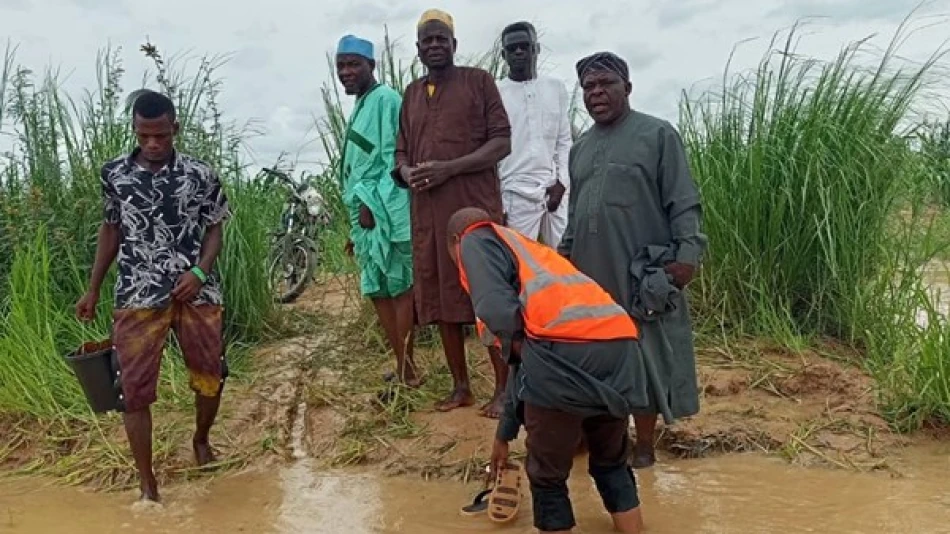
Dozens Missing After Boat Capsizes in Nigeria's Waterways
Nigeria's Waterway Crisis Deepens as 40+ Missing in Latest Boat Accident
A passenger boat carrying 50 people capsized in Nigeria's northwestern Sokoto State on Sunday, leaving more than 40 passengers missing and highlighting the country's persistent maritime safety crisis. Only 10 survivors were rescued from what appears to be one of the deadliest water transport accidents in the region this year.
The Sokoto Incident: A Familiar Tragedy
According to Nigeria's National Emergency Management Agency, the vessel was transporting passengers to a local market in Sokoto State when it overturned. The high casualty rate—with over 80% of passengers still unaccounted for—underscores the limited rescue capabilities in Nigeria's remote waterways.
Sokoto State, located in Nigeria's arid northwest, relies heavily on seasonal waterways and rivers for transportation, particularly during the rainy season when roads become impassable. The timing of this accident suggests passengers were likely traveling for weekly market activities, a common practice in rural Nigerian communities.
Nigeria's Recurring Water Transport Crisis
A Pattern of Preventable Disasters
This latest tragedy fits into a disturbing pattern of boat accidents across Nigeria, where water transport remains largely unregulated and unsafe. In 2023 alone, Nigeria recorded over 15 major boat accidents, claiming hundreds of lives across states including Kebbi, Niger, and Anambra.
The country's waterway accidents typically share common factors: overcrowded vessels, lack of life jackets, poor weather conditions, and aging boats that exceed safe passenger limits. Unlike maritime nations such as Indonesia or Bangladesh, which have implemented stricter ferry regulations after similar disasters, Nigeria's water transport sector remains largely informal and unmonitored.
Infrastructure and Economic Implications
Nigeria's dependence on water transport reflects broader infrastructure challenges. With limited road networks connecting rural communities—particularly in northern states like Sokoto—boats serve as essential economic lifelines. However, the recurring loss of life disrupts local commerce and deepens poverty in already marginalized communities.
The economic impact extends beyond immediate casualties. Market disruptions, loss of breadwinners, and reduced confidence in water transport can isolate rural communities from regional trade networks, perpetuating cycles of economic stagnation.
Regional Context and Safety Comparisons
Nigeria's water transport safety record contrasts sharply with countries facing similar geographical challenges. Bangladesh, after experiencing numerous ferry disasters in the 1990s and 2000s, implemented comprehensive vessel registration systems and mandatory safety equipment requirements. Indonesia has invested heavily in coast guard capabilities and passenger vessel monitoring systems.
In Nigeria, however, enforcement remains weak. Most passenger boats operate without proper licensing, safety inspections, or emergency equipment. The absence of standardized rescue protocols means that accident response often depends on local community efforts rather than professional emergency services.
The Path Forward: Urgent Reforms Needed
This Sokoto tragedy should serve as a catalyst for immediate regulatory action. Nigeria's National Inland Waterways Authority needs enhanced funding and enforcement powers to monitor passenger vessels, while state governments must invest in rescue capabilities and emergency response infrastructure.
More critically, Nigeria requires a comprehensive water transport policy that balances economic necessity with safety standards. This includes mandatory life jacket provisions, vessel capacity limits, weather-based travel restrictions, and regular safety inspections—measures that could prevent the majority of current accidents.
Without such reforms, Nigeria's waterways will continue claiming lives unnecessarily, undermining both human development and economic progress in communities that depend on water transport for survival.
Most Viewed News

 Layla Al Mansoori
Layla Al Mansoori






